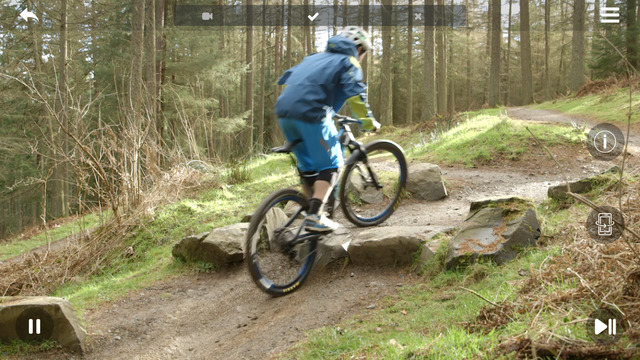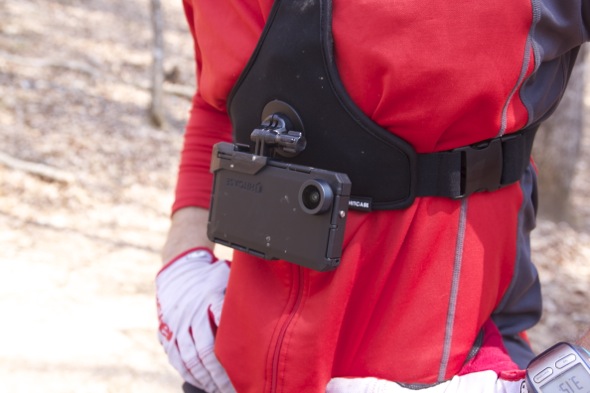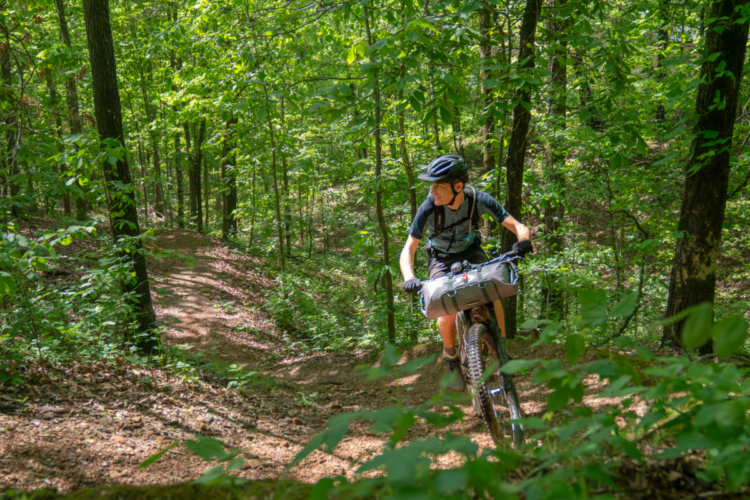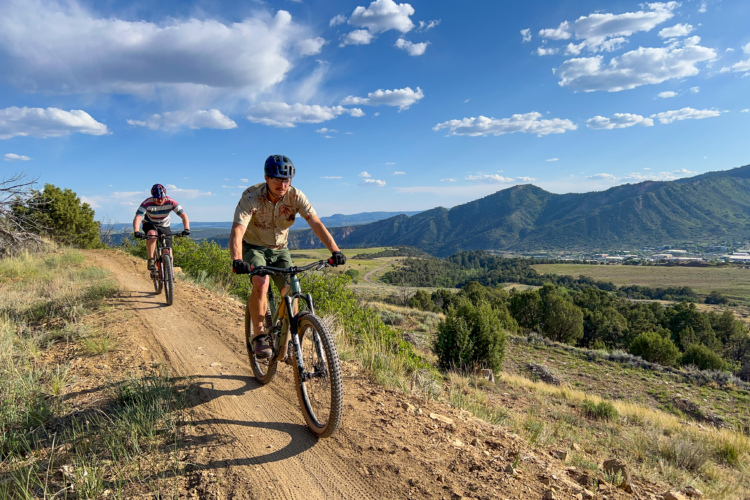
Any opinions expressed in this article belong to the author alone, and do not necessarily represent the opinions of Singletracks.com.
While the number of young mountain bikers has ballooned over the past few years, thanks in part to the thrill of Red Bull TV and valuable programs like NICA, the current majority of riders remain in the “middle-aged” demographic. For now. That means most of us spent our childhoods with limited or no internet access at home, no cellular or “smart” phones, and without thousands of videos to show us how to do everything on the trail before we arrived. We found entertainment and mischief outdoors, where everything happened in real time. We existed in the present. When I moved out of my parents’ North Idaho house at age eighteen, our television antenna could only fetch one station, and the local radio signal bore a similar selection. There wasn’t a single mountain bike program on either medium.
Today, young adults and kids can learn to work on their bikes, how to pull off a no-footer backflip, and find out who to impress if they want a pro racing contract, all from the same desk where they study for spelling and geography exams. If their bike malfunctions on the trail they can consult an article or video on Singletracks or YouTube and get all of the quick fixes to keep the fun rolling. Also, their bike and trail selection is sweet. In short, it’s a brilliant time to be a mountain biker.
Those same informative cellular screens also ask a lot of our emotional energy and time. Watching my thirteen-year-old daughter interact with the world around her and with her close friends, I see new ways of connecting. They talk to each other about what’s happening on a screen, even communicating through the screen while sitting in the same room. That device is powerful, both in its ability to provide vital information and connection, and its unceasing plea for attention. The “phone” pulls her deeper into webs of digital social connection and a whole new culture of belonging and meaning-making. Without my directive to go outside and breathe fresh air she will remain engrossed in that matrix from sunrise to sunset. I have yet to hear her question how that hand-held machine works or mention her relationship to it. I’ve asked. It seems to function more like a pacemaker, where she knows that she has to have it and may not fully understand why. I call it Cellular Life Support™.
While each generation of humans needs our new and shiny to love and prop up, I’m curious if there is much critical thinking, creativity, or learning going on inside some of those screens. From what my daughter shares of her online exploits over dinner, it’s all about responding to friends and commenting on videos that random people make. Not making content, asking questions, nor necessarily learning much. Just responding to what’s been recorded.
She’s allowed far less time on social media than “every other teenager” she knows and her phone doesn’t follow her to bed. Her desire for more time responding and video watching is the source of roughly 98% of all arguments in our family. The rub often occurs when I ask her to go outside — sans screen — and to simply experience the natural world for one hour a day. Maybe even get a little exercise by accident?
It sounds like there’s loads of positive connection and support happening between the thumbs and touch-screens of many young people today. Having grown up outdoors in the forest, I know that there’s a free wealth of positivity to be had out on trails as well, and I fear some young people are missing out. There’s a natural library waiting to be touched and smelled and heard, all forms of interactive learning. Being present outside, whether on a mountain bike or not, can immediately benefit all of us screen-gazers in meaningful ways. How do we connect the elements that kids love about their devices to being outside in nature? Or, is there a better way of detaching those experiences? Those of us who want our kids to love and care for the natural world are arm wrestling with the power of massive software corporations who want that same time and love.
Youth cultures and subcultures often flip the script with behaviors and ideas that are contrary to their generation and status-quo expectations. Hopefully, the next shift will point them toward the forest, where things are happening in real-time and not asking anyone to respond to them.
As Richard Louv put it, in his illuminating novel, Last Child in the Woods, “Unlike television, nature does not steal time; it amplifies it. Nature offers healing for a child living in a destructive family or neighborhood. […] Nature-deficit disorder describes the human costs of alienation from nature, among them: diminished use of the senses, attention difficulties, and higher rates of physical and emotional illness. This disorder can be detected in individuals, families, and communities.”
Are you under the age of 25? What do you think of your generation’s connection with nature and technology? Are things working well as is, or would you like to see some changes among your friends?











6 Comments
Oct 30, 2020
Nov 5, 2020
I want to comment on this line, though. I think it's an important one:
"From what my daughter shares of her online exploits over dinner, it’s all about responding to friends and commenting on videos that random people make. Not making content, asking questions, nor necessarily learning much. Just responding to what’s been recorded."
I don't see screens and technology as universally bad, especially when used in moderation, but I think HOW we use tech is as important as how MUCH we use it. If we are specifically striving to learn new things or create new art, I view these as healthy uses. Hours spent watching the newest fad YouTube vlogger? Not so much.
Even though the internet has dramatically democratized content creation, it's fascinating to observe that even though every single person who owns a smartphone could use these tools to create something new and fascinating, very few do. The creators are still the 1%, and the consumers the other 99.
Creating and learning: these two things are of vital importance, and will only be more so as the years roll on.
Oct 30, 2020
Oct 31, 2020
Oct 30, 2020
Oct 30, 2020
I'm glad you found something that works for your kids. It sounds like a pretty positive compromise.
I have seen The Social Dilemma. It's telling that the folks creating those manipulative algorithms don't let their kids use social media.
At 13, my daughter is ultimately going to do whatever her friends are into, and I have little influence on that. Maybe the best thing we can do is to keep sharing our love for activity and the outdoors and hope they find something they're passionate about beyond screens.